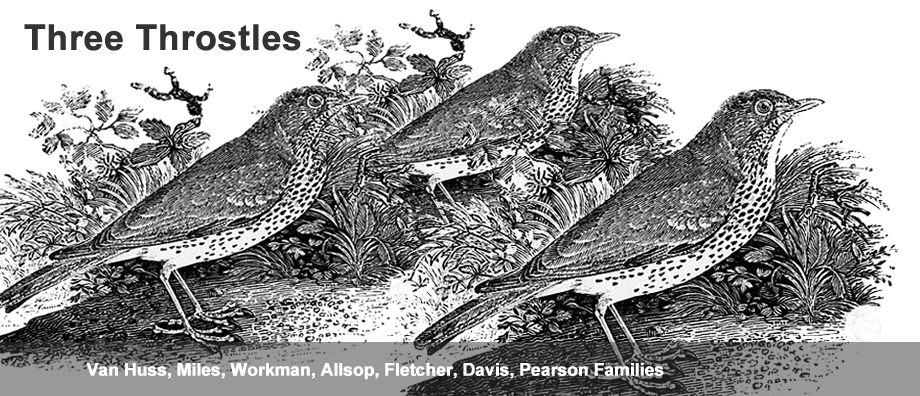Approaching Beaumont, Kansas from the west on Highway 400, just before you get to Beaumont, look to the left and there sits 480 acres of land (or is it 640 acres?) which once belonged to four or five brothers with the last name Van Huss. I say four or five because I am uncertain of the property records found in the county courthouse in El Dorado. The claims are there, reflecting the purchase of land from the Osage Indian Trust, but the deeds were filed over several years, and there was a little give and take between brothers.
This land is pasturage, lying as it does at the top of the Flint Hills between Butler and Greenwood counties. The Google Map of the property shows the beginnings of a creek that eventually becomes the Little Walnut River.
One can walk the land and find a stone foundation for a house long gone. Near by stands an iron pump made in Rockford Illinois.
 |
| Google Map Glencoe Township |
In the early days of my marriage, my wife's family would make numerous Sunday outings to Beaumont. We traveled by car from Wichita, heading east past Augusta, then Leon, and out into the treeless Flint Hills. Today, the trip takes perhaps 40 minutes, and in Beaumont, you can enjoy the serenity of the Flint Hills and good food at the historic Beaumont Hotel.
In olden days, we went on the Sunday before Memorial Day. First, there was a visit to the Beaumont Cemetery and the family graves. Then we enjoyed a softball game in Bob's front yard - Bob owned two houses on Main Street. Occasionally, we made a short fishing trip to the local pond where the fish never seemed to bite.
In Beaumont, my wife's father, Robert (Bob) Van Huss kept two homes. They were not grand homes, Beaumont has few of those, but they were sturdy, attesting to the values of the early settlers. Among those early settlers were Bob's father and grandfather who arrived by covered wagon and horse in the 1870's.
Bob proudly mentioned that his grandfather on his mother's side,
Dr. James W. Phillips, was the doctor for Beaumont and the Frisco Railroad, which made Beaumont a hub. He also spoke of the farm that his father's father once had off to the south and east of Beaumont. But never did I hear him speak of land to the north of Beaumont. So, what am I to think of this Butler County Atlas of 1885, which identifies a Van Huss owning 480 acres.
 |
| Detail of Kansas Atlas, 1885, Butler County, southeast corner of Glencoe Township |
The property is pasture land today. The land drains from the south and north into a creek which crosses the land to the west, eventually forming the Little Walnut River near Leon, Kansas. A dike at the west end of the property forms a lake that centers on Summit Road.
I parked the car just off Highway 400 and on Summit Road, just before one gets to the lake. I took the dogs Sammy, a German Shepherd, and Tobie, a Australian Shepherd and Mountain Cur mix, on a walk. The cattle were gone, but they had left reminders of their presence. We headed east avoiding the cow droppings early settlers prized when their was no wood to be found. One can follow the shallow creek bed or head out into the field which still contains chert here and there. It is the chert, which settler called "flint" that gives the area its name, the Flint Hills.
On the south side of the creek is an old pump and the stone outline of the foundation of a building. Perhaps, it is the house of old man Van Huss and his family.
 |
| Looking east toward Beaumont, property of old man Van Huss |
Notes.
1. If you examine the map for Glencoe Township, you will notice the initials "J.W.P" which in all certainty stand for James William Phillips.
2. The pump is made by Ward of Rockford, Illinois. I can't seem to find out much information on the pump other than a listing for
"Ward Pump Co. Manufacturers of Iron Pumps
and Cylinders. Frank Ward, President. Frank Lane, Secretary" from a map of Rockford, Illinois, 1891.
 |
| Ward Pump, Rockford Illinois |
Now I need to go back to the Register of Deeds Office in El Dorado, Kansas amd search the title records for this property.









